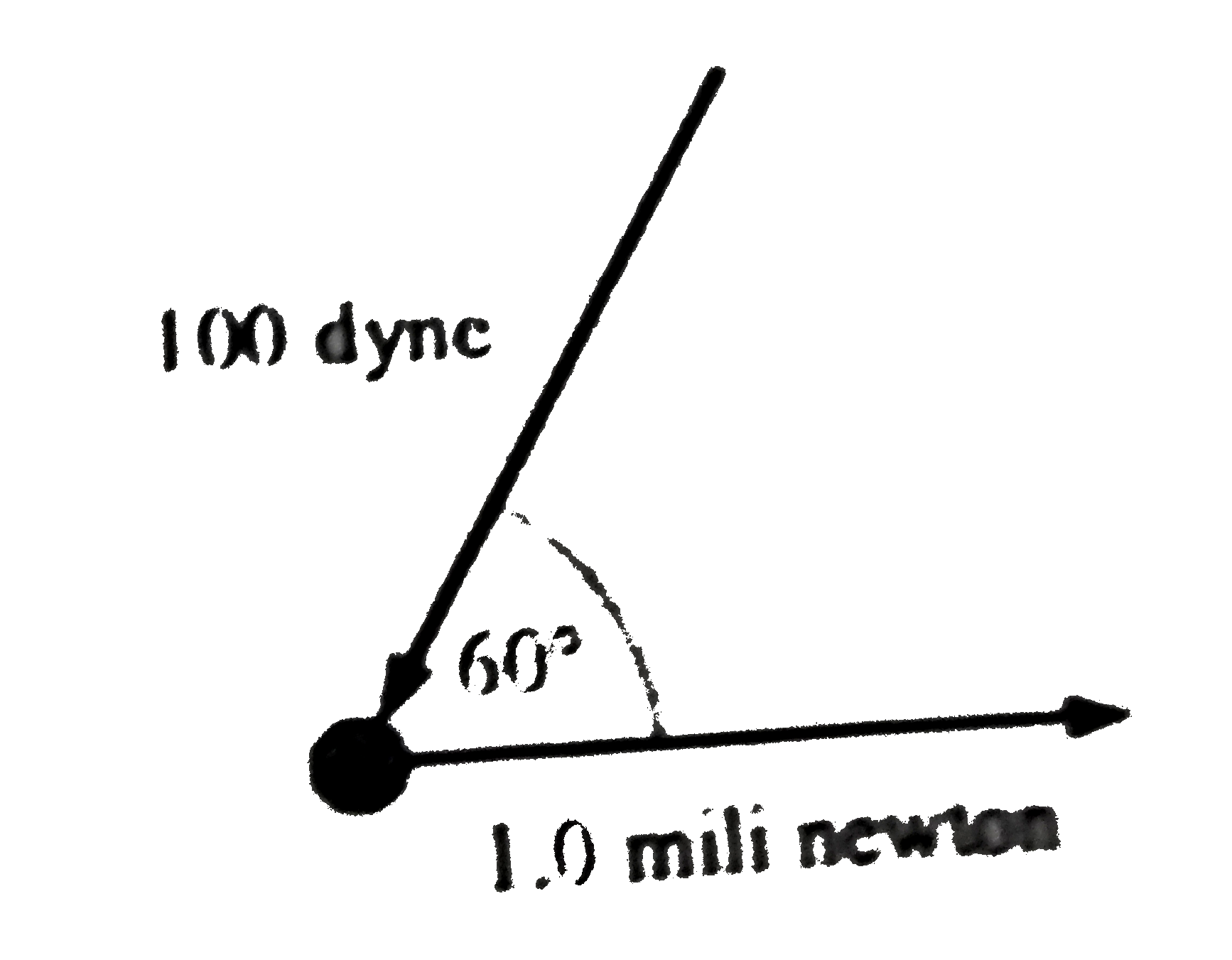Eleven forces each equal to 5N act on a particle simultaneously. If each force makes an angle 30° with the next one, the resultant of all forces is
15N
55 N
5 N
zero
The correct Answer is:C
Step by step video & image solution for Eleven forces each equal to 5N act on a particle simultaneously. If each force makes an angle 30° with the next one, the resultant of all forces is by Physics experts to help you in doubts & scoring excellent marks in Class 12 exams.
Updated on:21/07/2023Topper's Solved these Questions
- MOTION IN A PLANEBOOK - AAKASH SERIESCHAPTER - MOTION IN A PLANEEXERCISE - EXERCISE-2 (Lami.s theorem :)
8 Videos
- MOTION IN A PLANEBOOK - AAKASH SERIESCHAPTER - MOTION IN A PLANEEXERCISE - EXERCISE-2 ( Relative velocity)
15 Videos
- MOTION IN A PLANEBOOK - AAKASH SERIESCHAPTER - MOTION IN A PLANEEXERCISE - EXERCISE-IB (Circular motion)
12 Videos
- MAGNETISMBOOK - AAKASH SERIESCHAPTER - MAGNETISMEXERCISE - ADDITIONAL EXERCISE
22 Videos
- MOTION IN A PLANEBOOK - AAKASH SERIESCHAPTER - MOTION IN A PLANEEXERCISE - QUESTION FOR DESCRIPTIVE ANSWER
7 Videos
Similar Questions
Twelve forces each of 5 N act on a body simultaneously. If each force makes an angle of 30° with other their resultant is
View Solution100 coplanar forces each equal to 10 N act on a body. Each force makes angle π50 with the preceding force. What is the resultant of the forces
View SolutionFive equal forces each of 20N are acting at a point in the same plane. If the angles between them are same, the resultant of these forces is
View SolutionTwo equal forces (P each) act at a point inclined to each other at an angle of 120∘. The magnitude of their resultant is
View SolutionA force of 10.5 N acts on a particle along a direction making an angle of 370 with the vertical. Find the component of the force in the vertical direction.
View SolutionA force of 5N acts on a particle along a direction making an angle of 60∘ with verticle. Its verticel components is
View SolutionTwo forces of magentude 7 newton and 5 newton act on a particle at an angle θ can have any value . The minimum magnitude of the resultant forces is :
View SolutionOne of the two rectangular components of a force is 10 N and it makes an angle 60° with the force. The magnitude of the force is :
View SolutionTwo forces act on a particle simultaneously as shown in the figure. Find net force in milli newton on the particle. [Dyne is the CGS unit of forces ]

View SolutionFive equal forces of 10N each are applied at one point and all are lying one plane. If the angles between them are equal, the resultant force will be
View Solution
